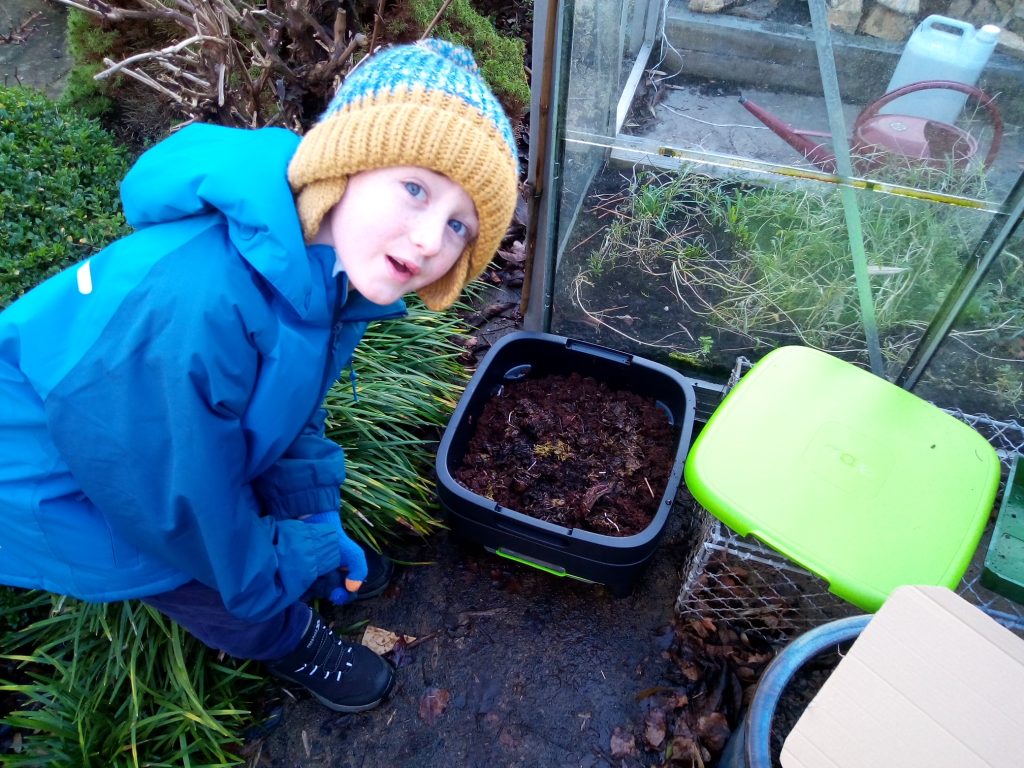One of our young eco-friendly friends, Thomas, aged 8, was delighted to get his very own worm farm recently.
Despite his tender years, Thomas is not a total novice. He’s grown up appreciating the wonderful work that worms do as he’s watched his father tend an old-school wormery that’s been in service for an impressive 35 years since the late 80s. That decade has a reputation as the materialistic yuppie era, but according to Thomas’s dad there was also a growing holistic community too, which didn’t attract as much media attention as the yuppies but was quietly thriving in the background.
Thomas’s dad saw the wormery advertised in an organic seed catalogue and has never looked back. This holistic-minded community has obviously grown and grown as the world has caught up with the philosophy that we’re all linked to the world around us.
Thomas is following a long family tradition of gardening, composting and veg growing, showing that great habits get passed down the generations. We need those great habits now more than ever. Wormeries are a great way to recycle food waste into nutrient-rich compost to feed the plants in your garden.
Thomas might be following in Dad’s footsteps but he’s also relishing having his own little worm community to care for.

In the photo taken in January, when the worm farm arrived, Thomas is seen making sure the worms are settling in well, with a cardboard cover to hand to provide the dark conditions that worms like. A strip of hessian sacking or a few sheets of newspaper can also be used as ‘blankets’.
A few months later, and with milder spring weather, Thomas is able to manage his worm farm without being all wrapped up!

The wonderful world of worms
- Worms produce top quality compost (vermicompost) which is richer and more nutrient-dense than ordinary compost, providing you with fertiliser for healthy plant growth.
- Worm farming is easy composting; your hard-working worms do all the work in turning the compost and by their tunnelling actions they aerate it too.
- Managing a wormery is a great project for children, showing them how to care for tiny living creatures that are essential to the planet and to us. Children also learn how to follow instructions, wait for results and develop observational and problem-solving skills, such as working out if conditions are too wet or too dry and what to do if a smell might be developing. (Wormeries should never smell bad, only fresh and earthy; a bad smell is a sign of overfeeding, which is easily remedied by feeding the worms less often and adding shredded cardboard to absorb moisture.)
On top of all that, worms are fascinating and fun!
Did you know?
There are over 9,000 species of earthworms, but only seven are suitable for vermicomposting. Red wiggler worms can be ordered from Great Green Systems and are sent out separately from our worm farm partners in Herefordshire.
A worm welcome
Tips to help your worms settle in.
- Worm farms need a sheltered spot away from direct sun and rain. A shed or garage is ideal. If placed outside, cover the worm farm with a tarpaulin in winter.
- The Maze Worm Farm is simple to start up. There are two working trays; you won’t need the second tray at first until the first one is full. You need to line the first tray with 2/3 sheets of wet newspaper.
- Coconut peat is provided for the worms’ bedding. This is soaked in water for 30 minutes, then added to the layer of wet newspaper.
- Worms like a dark environment so cover them with a blanket. This can be any fabric made from natural material, such as hessian, or several sheets of newspaper or cardboard.
- Leave the worms for a week before adding any food scraps so they can settle into their new home.
- Feed your worms chopped-up fruit and veg scraps, small amounts of bread/cooked rice/pasta, moist cardboard, teabags, coffee grounds, crushed eggshells.


